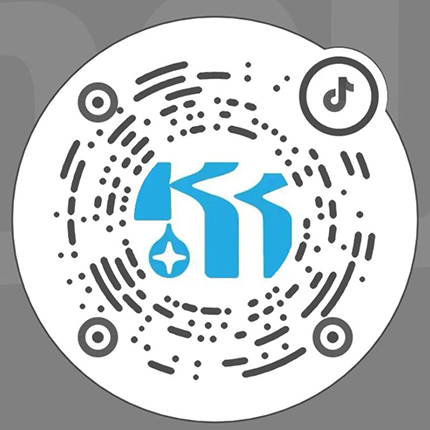With the abundance of materials and commodities, novel and beautiful packaging can attract more attention from consumers, and then make products more likely to be purchased. This is the artistic charm of packaging. Usually, the brand's image definition is stable, such as: Coca-Cola's red and white, Pepsi's eye-catching blue, Fanta's orange, and Sprite's iconic green bottle and yellow cap... However, from September this year, Sprite decided to The iconic green bottle that has lasted for 58 years is replaced by a transparent bottle that is easier to recycle.
In addition to the move, Sprite also announced that it expects to incorporate 50 percent recycled plastic into the production of its bottles in early 2020. Although the reprocessing of recycled green plastics into transparent materials will undergo financial and technical challenges, Sprite has not passed on the increased costs caused by these factors to sellers and consumers. This responsible brand development strategy has won a lot of praise, and these changes have indeed made the brand and product more environmentally friendly.
When sorting plastics for recycling, we can see that colorless and colored plastics are usually carefully distinguished. Transparent and colorless plastics have higher value when they are reused, while colored plastics will face a narrower gap when used directly. range of applications, or the cost of decolorization is borne by the manufacturer. Reducing the use of coloured plastics can make plastics more convenient to recycle, allowing more plastics to be processed efficiently.
Just this past Christmas, South Korea's amendment to the "Resource Recycling Law" was officially implemented. As early as August this year, South Korea's Ministry of Environmental Protection announced that new regulations on resource recycling will take effect on December 25. Not only will the new regulations come as expected to ban coloured plastic bottles that are difficult to recycle, but the use of polyethylene-based packaging, such as plastic wrap, will also be restricted.
Immediately after the implementation of the amendment, the traditional green plastic beverage bottles in various supermarkets will be widely replaced with colorless bottles. These new policies will initially restrict bottled water and tea, while other products such as cosmetics and alcohol use 's bottles plan to develop new recyclable containers within two years.
As a potential consumer market, my country's annual economic growth driven by consumption is very impressive, but at the same time, the problem of waste of resources is also difficult to ignore. As far as plastic bottles are concerned, my country can produce about 4 million tons of waste plastic bottles every year, but only a small part of them are well recycled. Among them, colored plastics are also affecting the efficiency of resource recycling.
Resource recovery system needs to be strengthened urgently
There are deficiencies in the construction of resource recovery systems in my country, such as the mixed disposal of recyclables, kitchen waste, hazardous wastes, and non-recyclable wastes, making it impossible for a large number of resources to be treated properly, and can only be carried out through landfill incineration and other means. "One brain" processing, and the traditional recycling mode has a greater demand for manpower, but it is often difficult to promote higher work efficiency by focusing on manpower.
Starting from the compulsory classification of garbage in Shanghai on July 1, my country will gradually promote the compulsory garbage classification in more than 40 pilot cities. This is different from the garbage classification that many cities or communities are advocating. Compulsory means that This rule will be implemented nationwide in the future. In the early stage of this trend, we have found that garbage classification is bringing about changes and leaps in other related industries.
For example: for recyclable garbage, many companies that follow the trend of garbage classification are launching a variety of smart garbage bins, which can classify and collect renewable resources such as paper, plastic bottles, and metals. Sorting in an orderly manner can save more time in the follow-up process; if you have seen many rubber and plastics exhibitions, you may have found that the development of garbage sorting equipment is also attracting more attention. Similar companies such as Bell Machinery, which are in The intelligent sorting equipment exhibited at this year's Chinaplas can not only sort resources of different materials, but also identify colored plastics. This more intelligent plastic machinery will provide technical support for garbage sorting and recycling, and provide resources for our country's resources. Assist in the construction of recycling systems.
Spontaneity facilitates recycling
Whether it is Sprite's new look or South Korea's amendment to ban green plastic bottles, they all point to one thing - reducing the use of colored plastics is more conducive to the recycling of plastic bottles.
Colored plastic bottles will face relatively complex problems in recycling, such as unsatisfactory quality of recycled plastics, cumbersome and time-consuming colorless treatment, and so on. For consumers, the color of the plastic bottle does not affect the product itself, and even more willing to accept the transparent plastic bottle, because it not only looks more "harmless", but also can clearly understand the inside of the package products, "the inside and the outside are the same", which makes consumers more at ease.
Under today's more emphasis on "natural, natural, and environmentally friendly" consumption patterns, the development of product packaging is entering a new era. In the early days when the meaning of packaging was discovered, complicated and gorgeous packaging was very popular, and the eye-catching packaging made the sales of the product more impressive, which also made the packaging design linger in the complex style for a long time. With the improvement of environmental awareness and people's pursuit of simple life style, minimalist design has won more and more attention, and this has also affected the field of packaging design. Simple and intuitive design means less resource consumption. , not only reduces the possibility of deception, but also seems to be more favorable to consumers.
And we did find that some merchants are realizing this problem. Rather than using bottles of various colors to attract consumers to buy, it is more intentional to choose transparent packaging to fully display the product to customers. This is not only reflected in the use of plastic bottles, but also in the packaging changes of many bags of milk, it is not difficult to find that many traditional soft bags (non-Tetra Pak) milk are covered with black film or opaque as a whole. The milky white packaging, and now more seen in the supermarket is the main fully transparent packaging.
Whether it is from improving resource utilization or promoting consumers' willingness to buy, the decolorization trend of plastic packaging shows that it will continue to affect the packaging field for a long time in the future, which is precisely in line with today's global awareness of environmental protection. Consistent with this trend, reducing the use of colored packaging may be more conducive to the future development of beverage manufacturers. After all, environmental protection has become a matter of all mankind.
Epilogue
The decolorization of plastic bottles is quietly spreading. Although it is mainly necessary for businesses to make changes spontaneously, perhaps there will be more willingness to legislate to regulate in the future. Everything has a beginning. After all, South Korea will prohibit the use of colored plastic bottles into regulations. A reference model has been provided for countries. In recent years, my country, which has been committed to environmental protection, is also looking for a way to improve resource recycling. Perhaps we are not far from the day when colored plastics are banned.
 Official Account
Official Account
 Video Number
Video Number
 Tiktok
Tiktok

03
2025-1202
2025-0906
2025-0605
2025-0608
2025-0506
2025-0506
2025-0312
2025-0219
2022-0902
2022-0802
2022-0802
2022-08